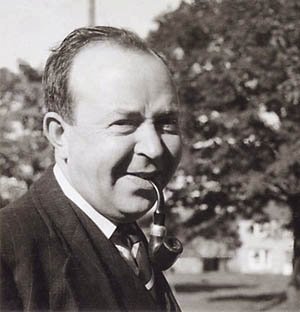 Reproduced in full is a
review from The Scotsman by Farquhar
Macintosh of Calum Maclean’s The
Highlands (1959):
Reproduced in full is a
review from The Scotsman by Farquhar
Macintosh of Calum Maclean’s The
Highlands (1959):
At
first sight this volume might appear to the casual observer as no more than
another picture book about the Highlands. But closer scrutiny soon reveals that
it is a picture book with a difference. Its author, Calum Maclean, is not
another outsider with a little knowledge but an informed and intelligent
native. This it is that makes the book distinctive and its publication an
event.
Few
areas have suffered so much as the Highlands at the hands of their
interpreters. Travel writes like Pennant and MacCulloch could find little that was
right, and the romantic writers who followed them could find little that was
wrong. But the picture which they presented, of ruined homesteads and ruined
castles, of picturesque but bracken-covered landscapes, of fairies in the glen
and water-horses in the tarn, created an illusion difficult to dispel. Even if
it were true, it would be wrong to conclude that the area which it purports to
portray has no real, present-day significance. As Alastair M Dunnett has put it
in his “Quest by Canoe”, “it would be as valid to assume form the ruined
Parthenon that ancient Athens boasted nothing better than a roofless culture.”
Faithful picture
Formal
historians have been scarcely more enlightened. Lacking a knowledge of Gaelic
and a real understanding of the people who spoke it, they have helped to
perpetuate the legend that “Highland” and “barbaric” are somehow synonymous;
and even yet, as Mr Maclean asserts, this insinuation has not been entirely
erased from the official text-books in the Scottish schools. Every reason,
therefore, to welcome a book of this kind by a Gaelic-speaking Highlander
equipped for the purpose.
True,
it may have the odd omission and the occasional inaccuracy, but the overall
picture is faithful and true. Here is one who speaks with authority and not as
the scribes.
Mr Maclean,
who was born on Raasay, is on the staff of the School of Scottish Studies at
Edinburgh University, and he brings to his task the learning and training of a
student of folk culture. His primary concern is, therefore, cultural: he
concentrates not so much on people as on people, and on the traditions and way
of life that they have come to foster and develop.
In
an admirable introduction and in the chapters which follow, the reader gets an
authentic account of the storied past, the uncertain present, and still more
doubtful future. Here one may meet with so much that is absent from our modern
city, with plain living and high thinking, and with that independence of mind
and spirit whose replacement by a servile, standardised mass mentality Smuts
once saw as the greatest human menace of our time.
The
book in fact, is largely written in terms of individuals, the self-taught
singers, players and story-tellers who, unable to stereotype their art by reading
or writing, have ripened it in the memory and given it a wonderful spontaneity
and a timeless appeal.
Religion
also occupies an important place; and the economic background has indeed not
been overlooked. In this respect indeed, the book is at once a condemnation and
a challenge: a condemnation of past wrongs and present neglect, and a challenge
to authority to act now ere it is too late. For one thing is certain: the Highland
cannot, by their own efforts, fit into a complex industrial State; and the
State has not hitherto cared enough to find a place for them.
Losing battle
It
is not surprising, therefore, that the dominant impression one gets from this
book is that the way of life which it describes is fighting a losing battle
almost everywhere against the social and economic forces of the day. I agree
with the author’s strictures on the system of education and about the need to
give Gaelic a prominent place in the curriculum; but unless the economic
problem is satisfactorily solved the culture is doomed.
Basically
this means the rehabilitation of crofting agriculture, because on its
preservation and promotion as a dignified and rewarding way of life depends the
preservation of the language and the distinctive culture associated with it.
But only good land will make good crofts, and until the present Commission has been given power and resources
to acquire and resettle the rich inland straths which saw wholesale evictions
at the time of the Clearances it will not succeed in its task.
One
is grateful to Mr Maclean and his publishers for this attractive volume, with
its magnificent photographs, and one hopes it will reach the large public which
it deserves. If it does it should help to bring to the Highlands a more enlightened
visitor, who will respect their traditions and the susceptibilities of their
people.
Reference:
Farquhar
Macintosh, ‘“The Highlands” is the authentic voice’, The Scotsman (23 April 1959), p. 8
Image:
The
“Forty-five” Monument at Glenfinnan by Noel Habgood reproduced from the first
edition of The Highlands. The monument was erected in 1815 by Alexander MacDonald of
Glenaladale to commemorate the Jacobite Rising of 1745

No comments:
Post a Comment